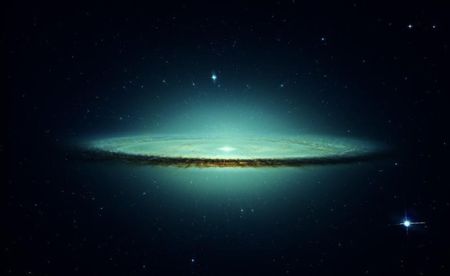(单词翻译:单击)
It was while puzzling over this problem that Bohr was struck by a solution and dashed off his famous paper. Called "On the Constitutions of Atoms and Molecules," the paper explained how electrons could keep from falling into the nucleus by suggesting that they could occupy only certain well-defined orbits. According to the new theory, an electron moving between orbits would disappear from one and reappear instantaneously in another without visiting the space between.
就是在思索这个问题的时候,玻尔突然想到一个答案,迅速写出了他的著名论文。论文的题目为《论原子和分子的构造》,认为电子只能留在某些明确界定的轨道上,不会坠入原子核。根据这种新的理论,在两个轨道之间运行的电子会在一个轨道消失,立即在另一轨道出现,而又不通过中间的空间。
This idea—the famous "quantum leap"—is of course utterly strange, but it was too good not to be true. It not only kept electrons from spiraling catastrophically into the nucleus; it also explained hydrogen's bewildering wavelengths. The electrons only appeared in certain orbits because they only existed in certain orbits. It was a dazzling insight, and it won Bohr the 1922 Nobel Prize in physics, the year after Einstein received his.
这种见解——即著名的“量子跃迁”——当然是极其奇特的,而又实在太棒,不能不信。它不但说明了电子不会灾难性地盘旋着飞进原子核,而且解释了氢的令人费解的波长。电子只出现在某些轨道,因为它们只存在于某些轨道。这是个了不起的见解,玻尔因此获得了1922年——即爱因斯坦获得该奖的第二年——的诺贝尔物理学奖。


